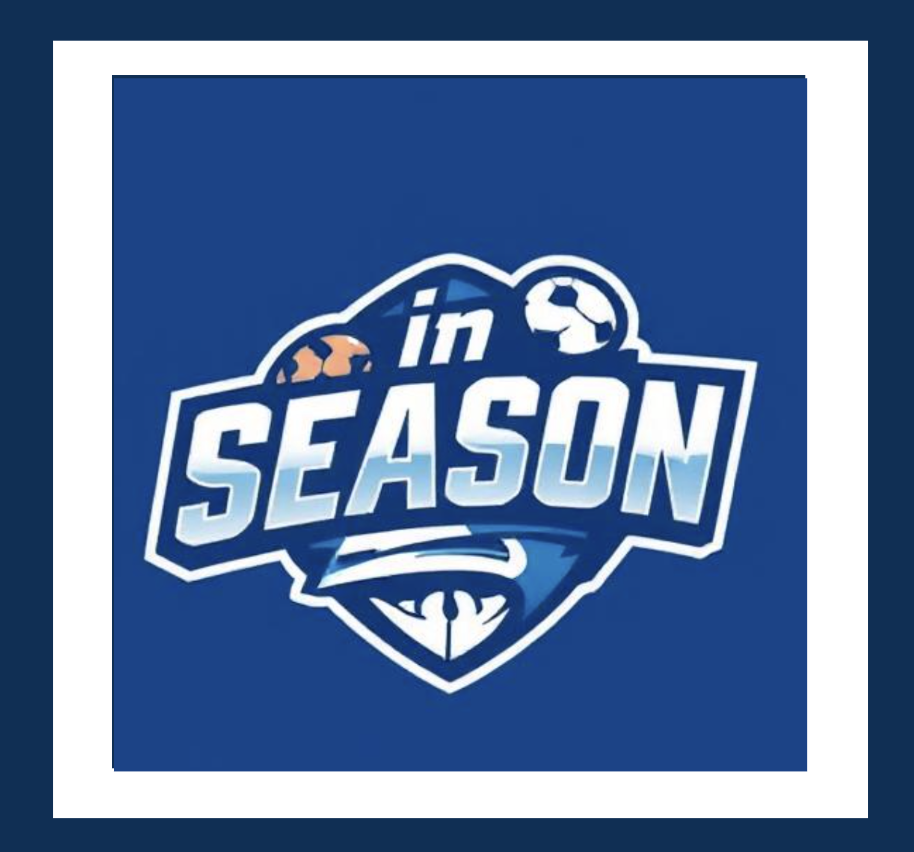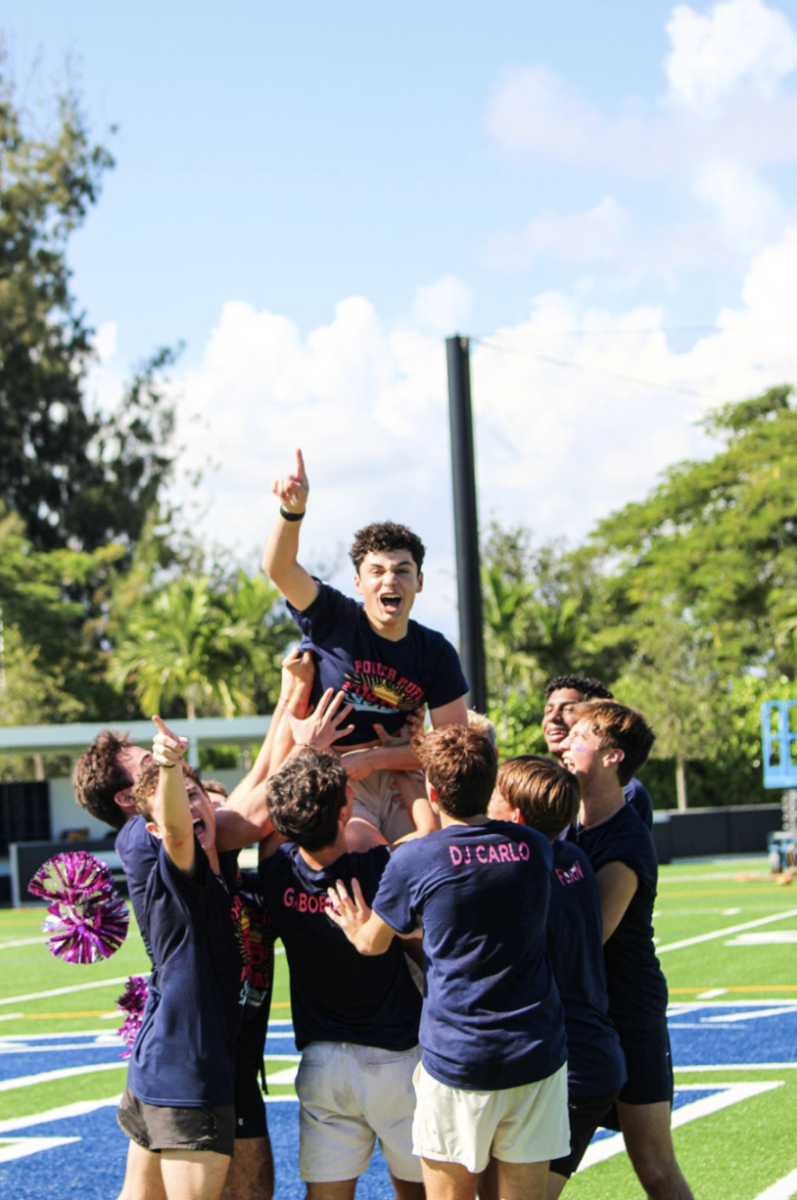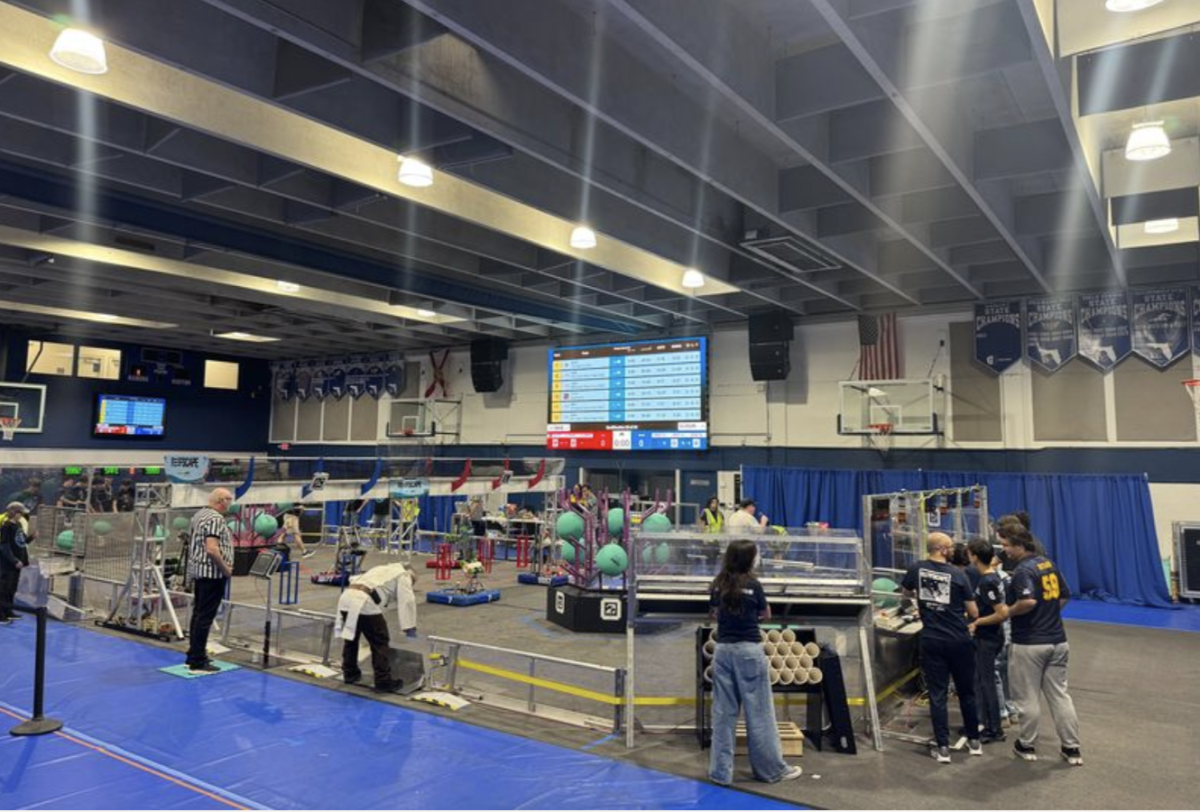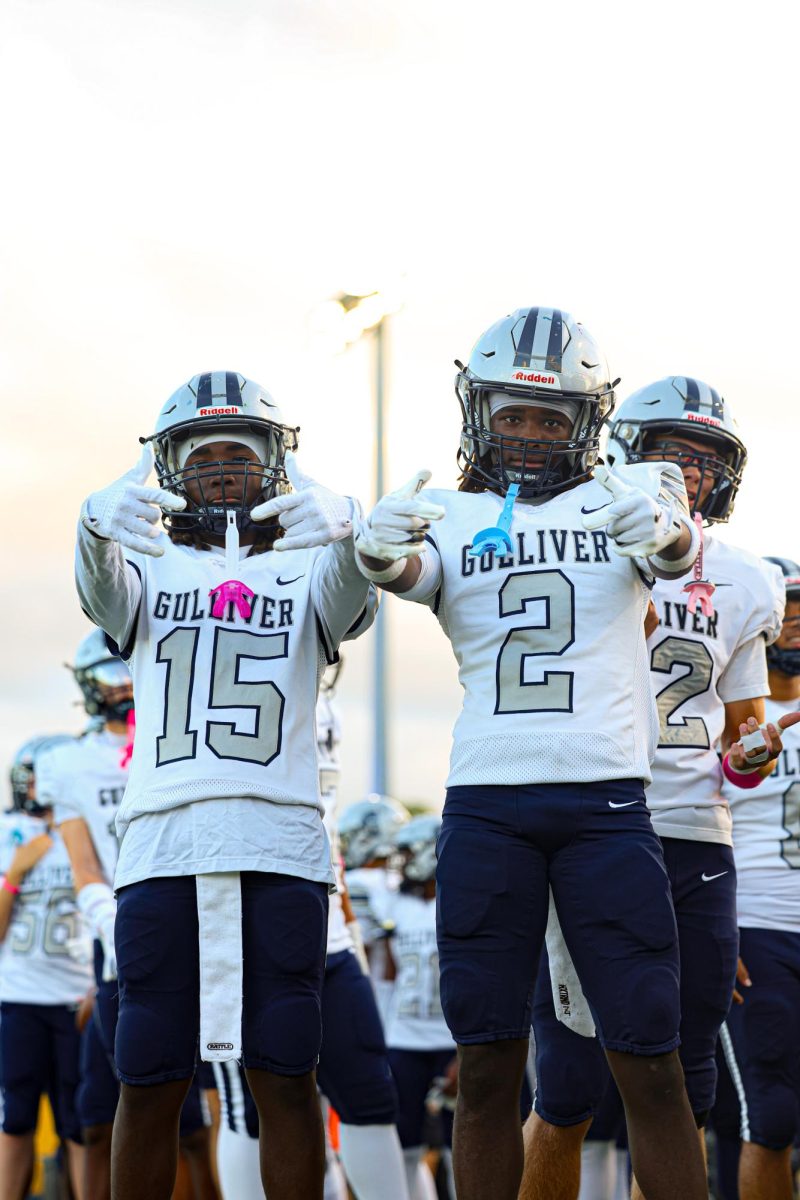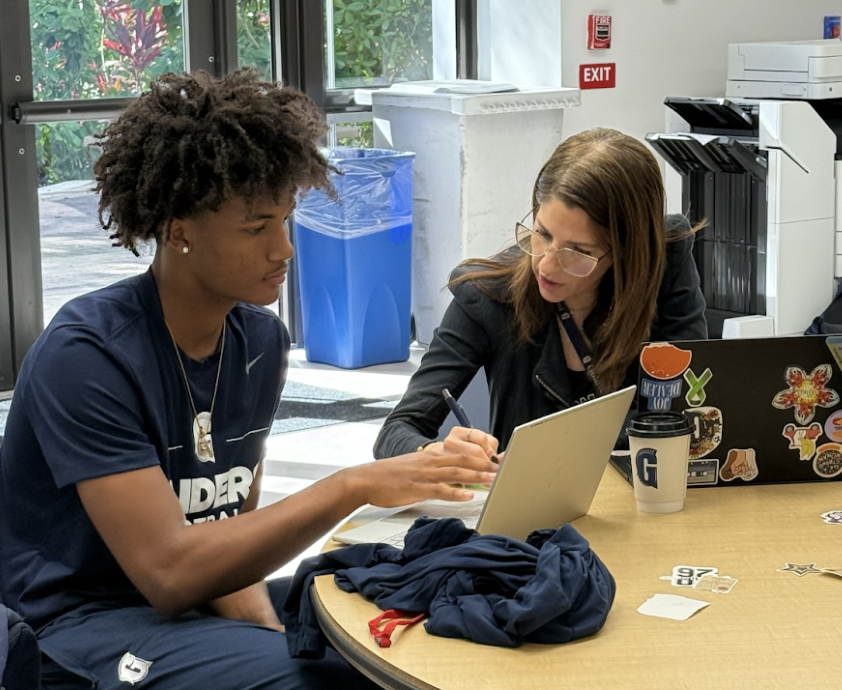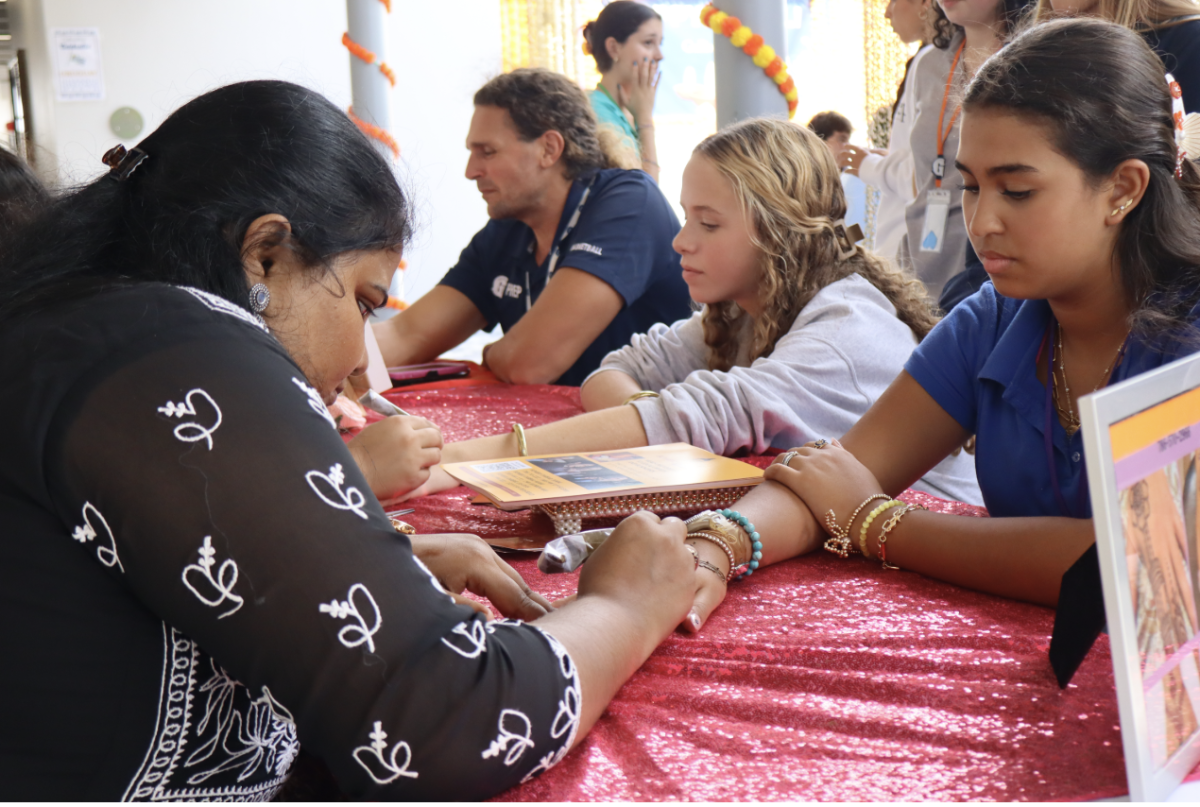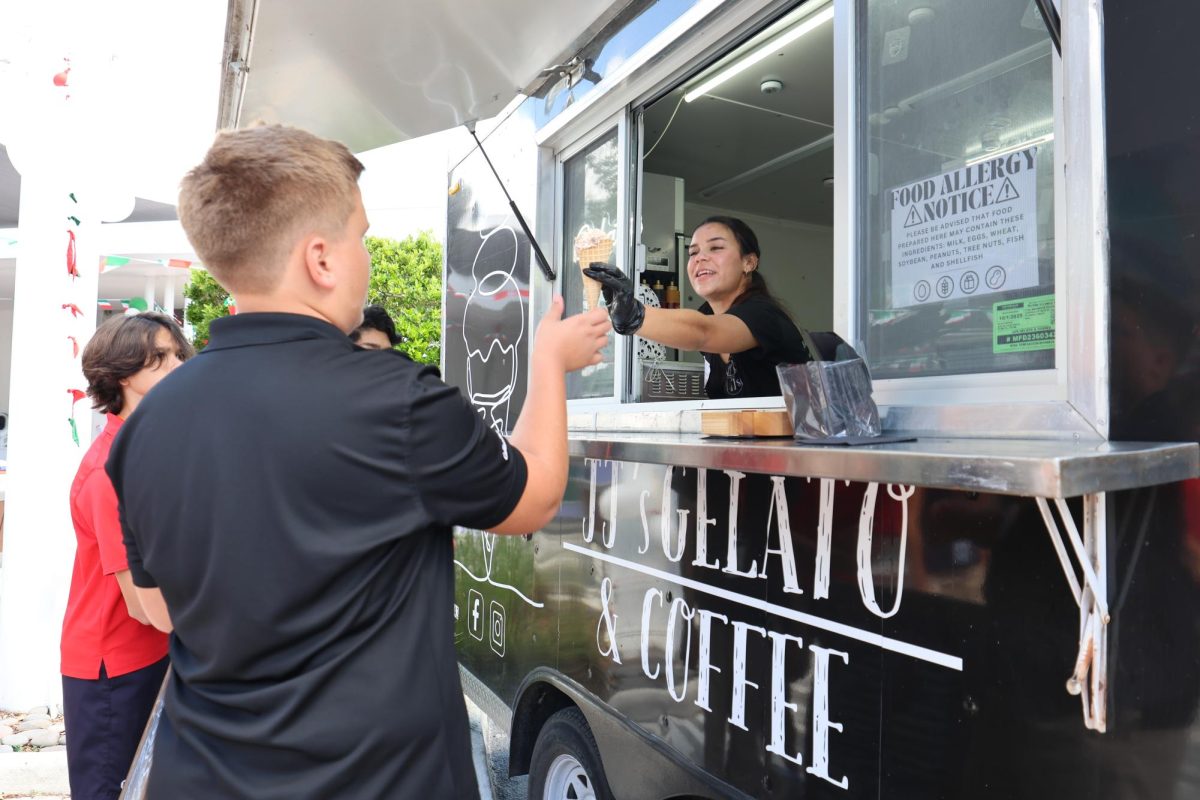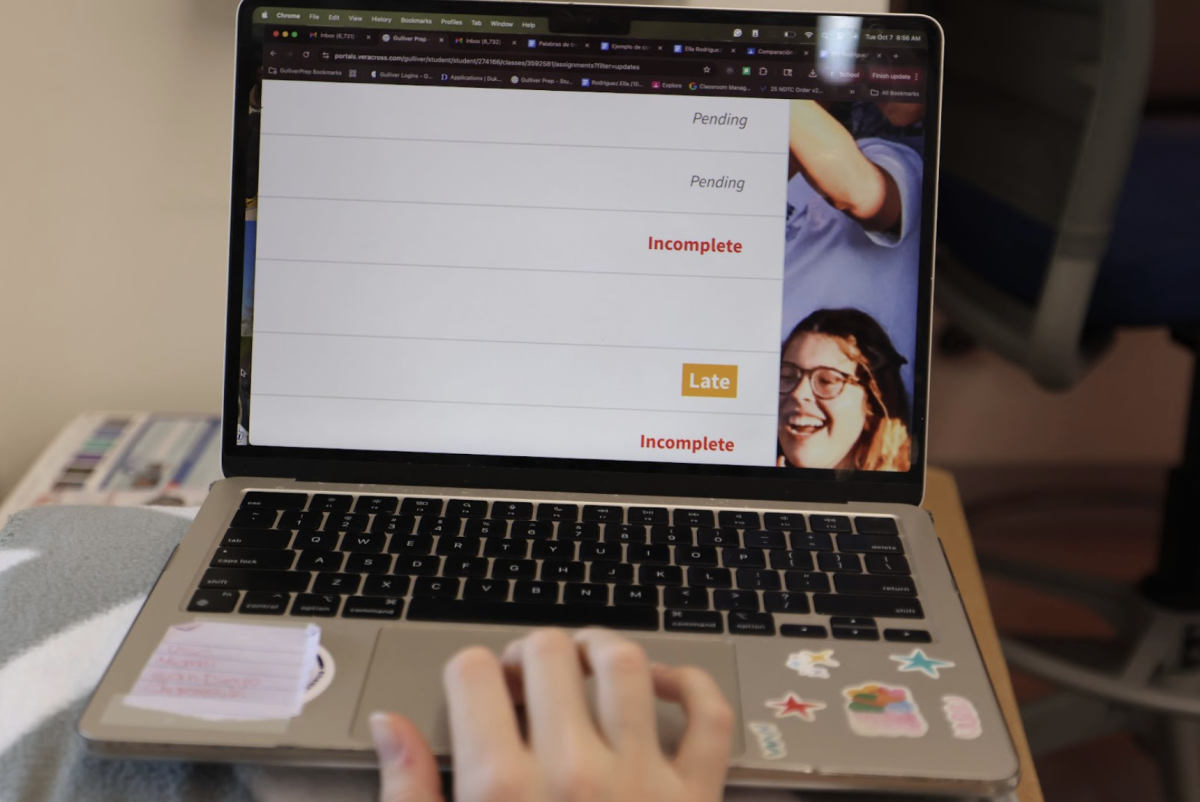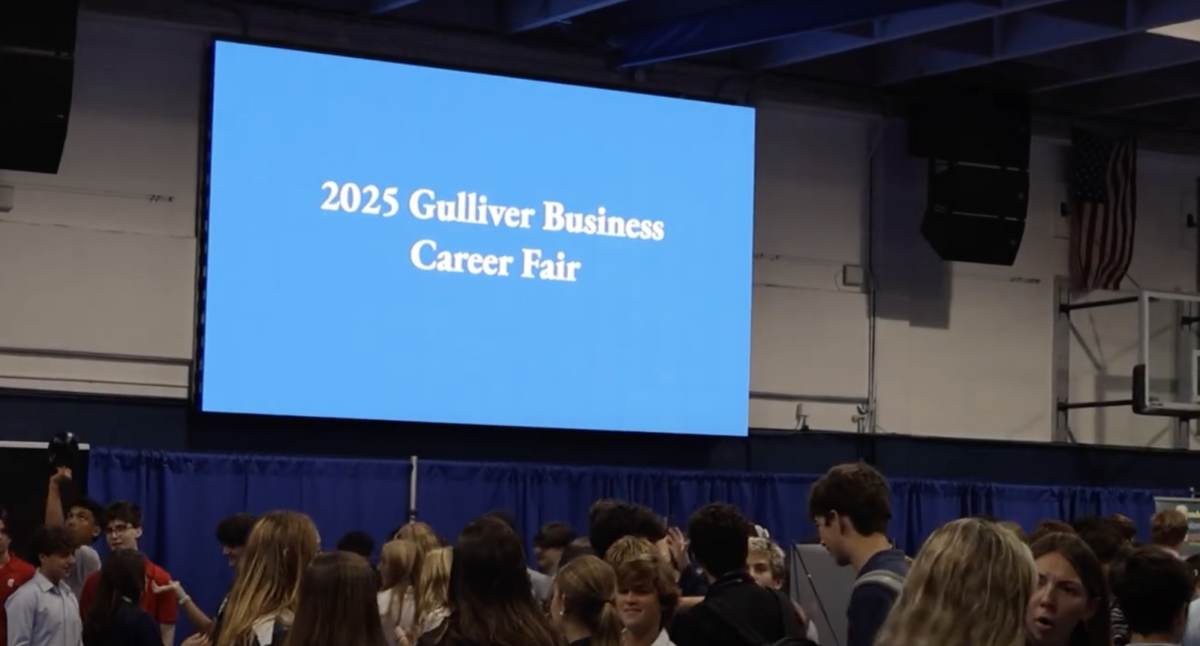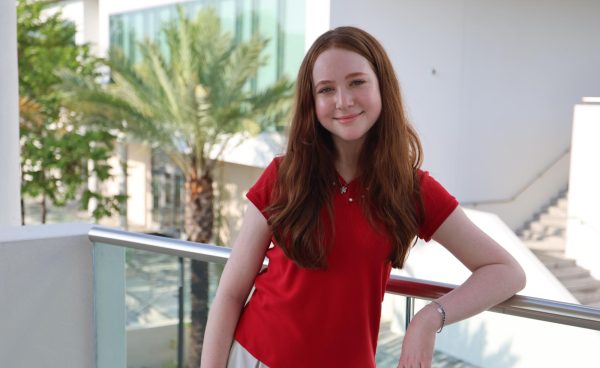The Blue Dungeon—usually a metropolis of pep rallies and buzzer beaters—took on a different kind of intensity on Apr. 23: the heat of scientific scrutiny. Transformed into a research symposium, the gym became a stage for students from almost every STEM-focused signature program and core course, those being Biomedical Sciences, Engineering, Computer Science, Chemistry, and several other tracks. Standing beside their posters, students explained their processes, defended their conclusions, and fielded live questions with the poise of doctorate hopefuls mid-dissertation defense.
‚ÄúIt was really hard to figure out what exactly we were doing and what would work in the best way,‚Äù said freshman Triana Rodriguez, who presented ‚ÄúHeat Shield Challenge‚Äù on behalf of her Engineering 1 Honors course. ‚ÄúMy team and I competed against Chemistry Honors students [sophomores], Rodriguez said.‚Äù¬Ý
Her team‚Äôs task mirrored the high-stakes nature of the occasion: construct a heat shield capable of simulating spacecraft reentry, using everyday materials like cornstarch and aluminum foil to keep temperatures below 55 degrees Celsius.¬Ý¬Ý
“So obviously when you reenter, it’s not a sphere, this is going to be very, very hot and you’re going to burn and you’re going to die. So we’re trying to make heat shields so you [humans on Earth] don’t die,” Rodriguez said.
But the kind of code-red fire ignited by Rodriguez’s project—and every other one showcased—wasn’t just thermal. It was an ignition of purpose: a flare against academic inertia, compelling students to apply their skyrocketing expertise under pressure.
“The Biomed [Biomedical Science] 4 classes have grown a lot. For example, a student … changed her project into something else to make it better,” said Biomedical Science teacher Yoly McCarthy, one of the event’s primary architects. “The programming class’s [robot] didn’t move at first—and had to be rebuilt twice,” McCarthy said.
Yet preparing research wasn’t a Bunsen burner—a formidable yet rewarding obstacle—for all student scientists and mathematicians. In a cooler corner of the fire, Programming 1: Fundamentals Honors freshman Milla Naumovich revisited her group’s earlier work, and saw, clearly, how deeply she’d been inscribed in the program’s algorithm throughout the year.
“It made me feel that we improved a lot,” Naumovich said. “Our actual [hard] skills—coding, writing stuff ourselves, researching—grew so much,” Naumovich said.
Their composition, a game called “Candy Run,” began as a simple decision tree: answer yes or no, and watch where the choice takes you. But over time, the group added complexity—buttons, logic layers, user interaction—and realized the game’s design codified their own experience of learning the basics of Computer Science.
“You answer yes or no, and it brings you to different choices,” the now-proficient student coder said. “That’s kind of what coding is like,’’ Naumovich said.
Rodriguez, the heat-shield blacksmith, Naumovich, the intellectual game designer, and every other student in the showcase delivered a resounding yes—to the pressure, the process, and the burn that comes with setting the high-school STEM sphere on fire—one line of pseudocode and concluding statement at a time.


